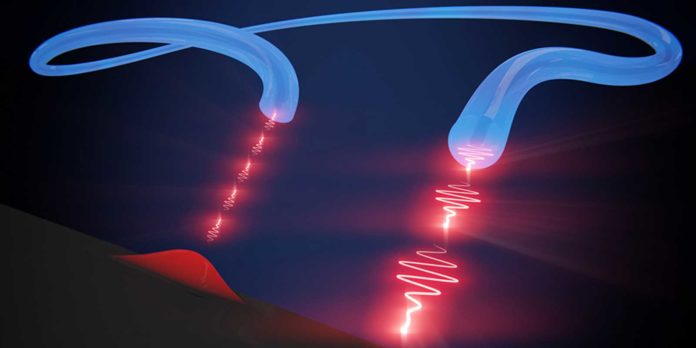Unlike classical encryption, quantum encryption, also called quantum cryptography, offer the promise of virtually unbreakable encryption. It uses a series of photons (light particles) to transmit data.
In the future, as scientists have predicted- remote quantum processors will communicate with one another through single photons. Furthermore, maybe the processor will utilize photons as quantum bits for computing.
A basic need for such applications, in any case, is a proficient source of single photons.
In collaboration with Ruhr University Bochum, scientists from the University of Basel report the development of a single-photon source that significantly surpasses previously known systems in terms of efficiency. Interestingly, this new single-photon source can produce billions of these quantum particles per second.
Scientists created each photon by exciting a single ‘artificial atom’ within a semiconductor.
In this system, scientists employed gated quantum dots in an open, tunable microcavity. Usually, photons leave the quantum dot in all possible directions, leads to the loss of a large fraction. Scientists addressed this problem by positioning the quantum dot inside a “funnel”. Doing, so photons pass through a specific direction.
Also, the funnel captures almost all of the photons and then directs them into an optical fiber. The photons, each about two centimeters long, emerge at the end of an optical fiber.
Lead author Richard Warburton said, “The efficiency of the entire system – that is, the probability that excitation of the quantum dot results in a usable photon – is 57 percent, more than double that of previous single-photon sources.”
“This is a really special moment. We’ve known for a year or two what’s possible in principle. Now we’ve succeeded in putting our ideas into practice.”
“The increase in efficiency has significant consequences-increasing the efficiency of single-photon creation by a factor of two adds up to an overall improvement of a factor of one million for a string of, say, 20 photons. In the future, we’d like to make our single-photon source even better: We’d like to simplify it and pursue some of its myriad applications in quantum cryptography, quantum computing, and other technologies.”
The Swiss National Science Foundation-funded the project, the National Center of Competence in Research “Quantum Science and Technology” (NCCR QSIT), and the European Union under the Horizon2020 program.
Journal Reference:
- Natasha Tomm, Alisa Javadi, et al. A bright and fast source of coherent single photons. Nature Nanotechnology (2021), DOI: 10.1038/s41565-020-00831-x
